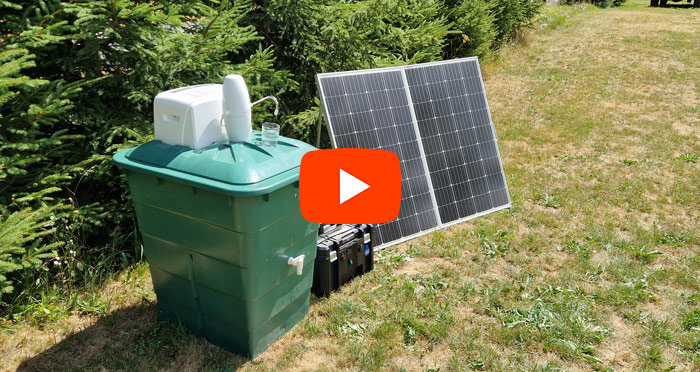
Everything On Earth Is Borrowed Graphic © InspirationPowerBoost.com
“Everything on Earth is Borrowed… There is no ‘Mine’ or ‘Yours,’ there is only ‘Ours’… Even Time is Borrowed. We Kill over a Plot of Land, that belongs only to our Mother Earth. All you have is what you came with… and what you will leave with… Your Spirit.”
The Transience of Material Possessions
This profound quote reminds us of the transient nature of material possessions and the fallacy of ownership. In essence, it tells us that everything we ‘own’ is only temporary. The land we fight over, the possessions we accumulate, and even the time we have, are not truly ours. They are part of the Earth, borrowed for our use during our lifetime. This perspective encourages us to rethink our relationship with the material world and to live with a sense of stewardship rather than ownership.
Our Shared Custodianship of Earth
The saying underscores the concept of shared custodianship of the Earth. It implies that we are not isolated proprietors of our possessions but part of a larger community responsible for caring for our planet. This view fosters a sense of collective responsibility and encourages us to act in ways that are beneficial not just to ourselves but also to the larger community and the environment.
The Illusion of Permanent Ownership
The quote also highlights the illusion of permanent ownership. In our quest to accumulate and own, we often forget that our time here is limited. It challenges us to shift our focus from acquiring material wealth to nurturing our spiritual and emotional well-being. This shift in perspective can lead to a more fulfilling and meaningful life.
Finding Meaning Beyond Materialism
In a world where material success is often glorified, this quote serves as a reminder to seek meaning beyond materialism. It encourages us to find value in relationships, experiences, and personal growth. Recognizing that our true legacy lies not in what we own, but in the impact we have on others and the memories we create.
Historical Example I: The Great Law Of Peace
Around the 12th century, in what is now present-day upstate New York, five distinct Indigenous nations, the Mohawk, Oneida, Onondaga, Cayuga, and Seneca, were engaged in frequent conflicts and warfare with one another. Famine, bloodshed, and destruction plagued the region, leaving the nations devastated.
In response to this chaotic state, an Indigenous visionary named Deganawida, also known as the Great Peacemaker, emerged among the nations. Deganawida believed in the unity of the nations and sought to end the cycles of violence and retribution. He approached Hiawatha, a skilled orator and statesman from the Onondaga nation, to help him spread his message of peace.
Together, Deganawida and Hiawatha traveled from nation to nation, advocating for a fundamental shift in perspective – the understanding that everything, including the land, resources, and even leadership, belonged to everyone collectively. They enshrined this philosophy in a set of principles called the Great Law of Peace.
The Great Law of Peace emphasized the importance of consensus decision-making, equal representation, and a recognition that nature’s gifts were to be appreciated and shared by all. These principles helped to establish and solidify the Iroquois Confederacy, also known as the Haudenosaunee, which became a remarkable model of governance that lasted for centuries.
Historical Example II: The Treaty of Tordesillas.
In the late 15th century, two powerful European nations, Spain and Portugal, competed to explore and colonize foreign lands. They both sought to expand their influence, wealth, and control over territories around the world, particularly in the newly discovered lands of the Americas.
To avoid conflicts and clashes between these two imperial powers, Pope Alexander VI issued a papal bull known as the Treaty of Tordesillas on June 7, 1494. The treaty aimed to divide the unexplored world between Portugal and Spain, establishing a dividing line that ran from the North Pole to the South Pole, about 370 leagues (approximately 1,770 kilometers) west of Cape Verde Islands.
The Treaty of Tordesillas effectively partitioned the globe into two parts, giving Portugal rights over lands and seas east of the line, while Spain had rights to the west. This agreement granted them the exclusive rights to explore, conquer, and colonize territories within their respective areas.
This anecdote illustrates the saying because it demonstrates how even vast expanses of land and sea were arbitrarily divided and claimed by two European powers. The concept of ownership and control was imposed upon these lands, disregarding the fact that indigenous populations had already inhabited and thrived in these territories for centuries.
Historical Example III: The Ancient Library of Alexandria.
The Library of Alexandria, established in the 3rd century BCE in Alexandria, Egypt, was one of the largest and most renowned libraries of the ancient world. It was home to a vast collection of scrolls and manuscripts from diverse civilizations and cultures, making it a center of knowledge and learning.
During its existence, the library attracted scholars from all corners of the ancient world, who came to study, learn, and contribute to its collection. The library welcomed scholars regardless of their nationality, ethnicity, or beliefs, becoming a symbol of intellectual curiosity and cultural exchange.
One famous historical anecdote related to the library revolves around the Greek philosopher and mathematician, Euclid. Euclid is best known for his work on geometry, which was compiled in his renowned book, “Elements.” According to ancient accounts, when Ptolemy I, one of the successors of Alexander the Great, learned about Euclid’s book, he demanded that the mathematician present it to him.
Euclid, recognizing the value of his work and the importance of knowledge, responded by saying, “There is no royal road to geometry.” Meaning, the knowledge contained within the book was not exclusive to the ruler, but rather part of the collective wisdom and heritage of humanity. Euclid emphasized that the understanding of geometry, like any knowledge, was not something that could be possessed solely by one individual but belonged to all.
Historical Example IV: The Iroquois Confederacy
The Iroquois Confederacy was a powerful alliance of Native American tribes that inhabited the northeastern part of North America, in the area that is now known as upstate New York and parts of Canada. These tribes included the Mohawk, Oneida, Onondaga, Cayuga, and Seneca.
The Iroquois way of life was deeply rooted in a communal philosophy and respect for nature. They believed that the land, forests, rivers, and all resources were meant to be shared among the community and not owned by individuals. Their perspective emphasized that everything was borrowed from the Earth, and it was their responsibility to protect and maintain the harmony and balance of the natural world for future generations.
This philosophy is beautifully exemplified in the Iroquois Thanksgiving Address, a profound ritual performed by the tribes to express gratitude and recognize their interconnectedness with all living beings. During this ceremony, prayers were recited to thank each element of nature, such as the sun, moon, animals, plants, water, and even abstract concepts like love and trust. The Thanksgiving Address served as a reminder that everything on Earth was interconnected, and nothing truly belonged to individuals but rather was part of a collective inheritance.
This mindset not only influenced their relationship with the environment, but also their social structure. The Iroquois Confederacy was organized around a system known as the Great Law of Peace, which aimed to foster unity, harmony, and consensus among all member tribes. Decisions were made collectively, with each tribe having an equal voice, and the principle of consensus ensured that everyone’s opinions were considered.
This historical anecdote of the Iroquois Confederacy illustrates the saying by highlighting how their communal philosophy recognized the interconnectedness and interdependence of everything in the world. It emphasizes the idea that there is no true ownership of resources or land; instead, it is our shared responsibility to protect and preserve the Earth’s gifts for future generations.
Daily Affirmation
“Today, I acknowledge that what I have is borrowed and choose to live with gratitude and responsibility. I focus on what truly matters – my relationships, experiences, and the legacy I leave behind.”
Related Inspirational Quotes
“We do not inherit the Earth from our ancestors; we borrow it from our children.” – Native American Proverb
“The Earth does not belong to us; we belong to the Earth.” – Chief Seattle
“What we are doing to the forests of the world is but a mirror reflection of what we are doing to ourselves and to one another.” – Mahatma Gandhi
“Only when the last tree has died and the last river been poisoned and the last fish been caught will we realize we cannot eat money.” – Cree Indian Proverb
“He who knows that enough is enough will always have enough.” – Lao Tzu
😳 What Tinnitus Does To Your Brain Cells (And How To Stop It)
After 47 years of studies and countless brain scans done on more than 2,400 tinnitus patients, scientists at the MIT Institute found that in a shocking 96% of cases, tinnitus was actually shrinking their brain cells.
As it turns out, tinnitus and brain health are strongly linked.
Even more interesting: The reason why top army officials are not deaf after decades of hearing machine guns, bombs going off and helicopter noises…
Is because they are using something called "the wire method", a simple protocol inspired by a classified surgery on deaf people from the 1950s...
This Crazy Off Grid Device Literally Makes Drinkable Water From Fresh Air:
According to NASA, the U.S. is expecting a 100-YEAR LONG MEGADROUGHT.
It's already begun. Ask the farmers in California. They know.
Every survivalist knows that water is of critical importance. You NEED an independent water source that you can count on!
As an interesting "survival rehearsal" - imagine that you turned the tap on right now and nothing came out. How long would you last?
But what if there was another water source literally hidden in plain sight? That's right, I'm talking about the atmosphere!
The amazing thing about getting water from the natural moisture in the air... is that it is ALWAYS available.
This gives you real water security!
Learn more about how to tap into "Nature's secret water reservoir" and stay hydrated when TSHTF!
Watch the video:
Most People Don't Have The Guts To Try This:
An amazing discovery in an abandoned house in Austin, Texas: A lost book of amazing survival knowledge, believed to have been long vanished to history, has been found in a dusty drawer in the house which belonged to a guy named Claude Davis.
Remember... back in those days, there was no electricity... no refrigerators... no law enforcement... and certainly no grocery store or supermarkets... Some of these exceptional skills are hundreds of years of old and they were learned the hard way by the early pioneers.
>> Click here to find out about them now
We've lost to history so much survival knowledge that we've become clueless compared to what our great grandfathers did or built on a daily basis to sustain their families.
Neighbors said that for the last couple of years Claude has tried to unearth and learn the forgotten ways of our great-grandparents and claimed to have found a secret of gargantuan proportions. A secret that he is about to reveal together with 3 old teachings that will change everything you think you know about preparedness:






